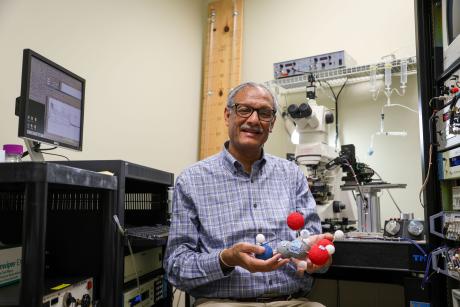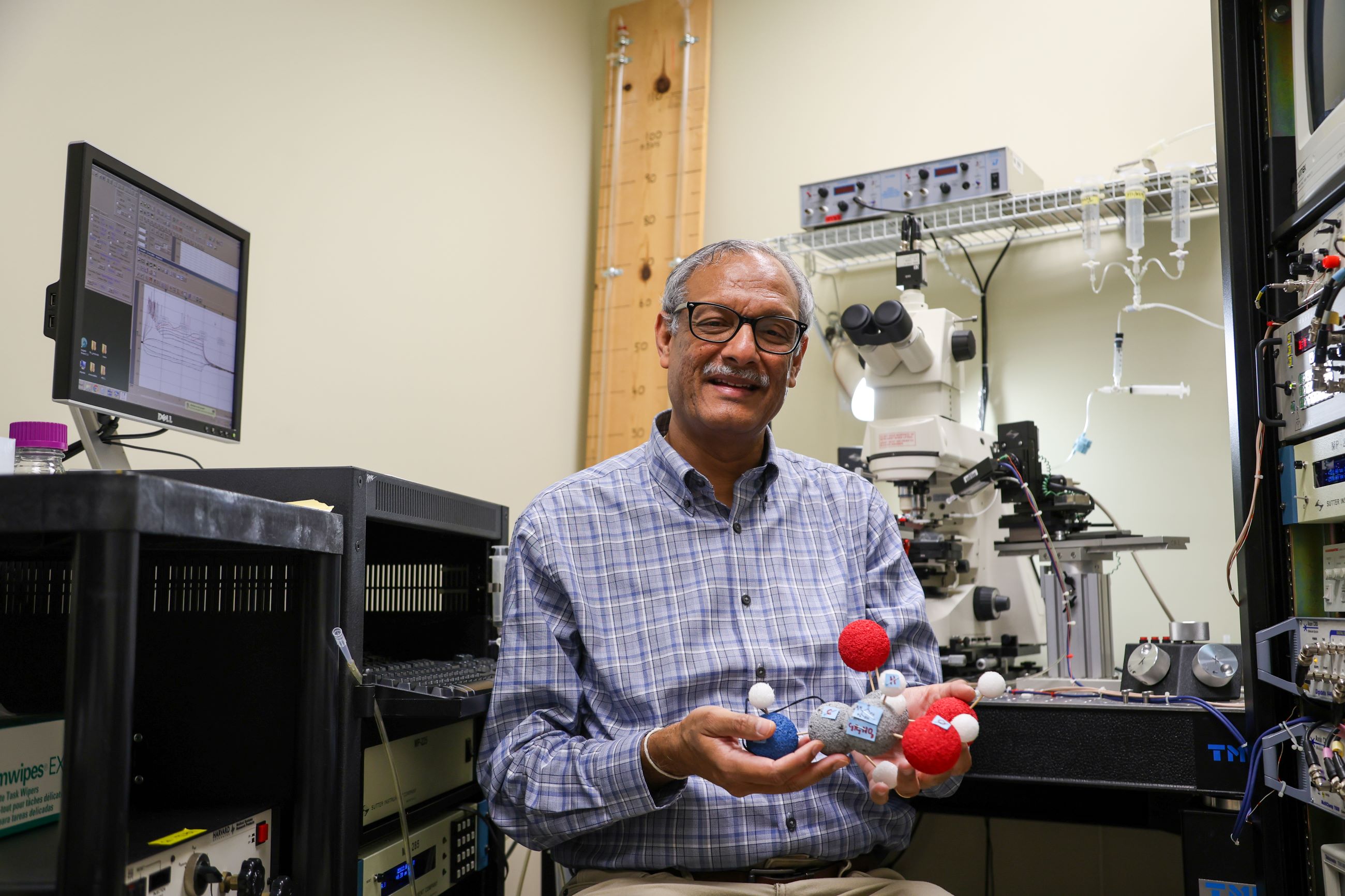Kumar Lab breakthrough yields patent, hope for TBI patients


Sanjay Kumar, Ph.D., whose decades of research into Temporal Lobe Epilepsy (TLE) have helped scientists better understand many aspects of neuroinflammation and how it leads to neuronal death, has been awarded a patent for using D-serine to prevent neuroinflammation caused by traumatic brain injury (TBI).
The introduction of D-serine reduces the onset and severity of seizures. Additionally, it may have application in non-TBI neurodegenerative disorders.
“The brain is a sacrosanct organ and, as such, it does not tolerate well the introduction of foreign substances that might be used as therapeutic intervention,” said Kumar, a professor in the Department of Biomedical Sciences at the Florida State University College of Medicine. “But D-serine is an amino acid produced in the brain, and thus not a foreign substance at all, so it works very well.”
Several years ago, Kumar and his associates discovered a special class of glutamate receptors, lovingly dubbed as “FSU receptors,” in the entorhinal cortex of the brain that allow about five times more calcium to enter neurons than conventional receptors do. The overstimulated neurons were triggering seizures in animal models with TLE. The overstimulation, known as hyperexcitability, causes neurons to die in a process called excitotoxicity. D-serine blocks the receptors to keep excess levels of calcium from entering the neurons, preventing seizures and neuronal death.
Glutamate is the most abundant excitatory neurotransmitter released by nerve cells in the brain and central nervous system, maintaining proper brain function and playing a significant role in shaping learning and memory.
Kumar and Stephen Beesley, Ph.D., a College of Medicine research faculty member at the time whose name is also on the patent, made a fortuitous discovery: D-serine also prevents the proliferation, aggregation and sequestration of microglia, the brain’s immune cells, to sites of neuron loss triggered by injury.
“The microglia are the scavenger cells,” Kumar said. “They come in and cause further neurodegeneration and further loss of neurons. D-serine can block them, and their damage, as well.”
FSU College of Medicine Dean Alma Littles, M.D., said this latest discovery by the Kumar Lab offers hope that people who suffer traumatic brain injury might not go on to develop epilepsy.
“Whether they are athletes on the playing field, the courageous members of our armed forces, or the growing number of senior citizens in Florida and elsewhere in the country who worry about the consequences of falling, all will benefit from the work of P rofessor Kumar and his team,” she said.
“When you factor in the potential benefits for non-traumatic brain injuries such as Alzheimer’s and stroke, this is a real game-changer. Once again, FSU’s commitment to research that changes lives pays off. I am so proud that our College of Medicine researchers are helping lead the way.”
Beesley is now a senior scientist working in the private sector on gene therapies for Huntington’s disease, another neurodegenerative disease. In addition to noticing the vastly reduced neurodegeneration in the area in the entorhinal cortex where D-serine was administered, Beesley said the team noted reduced inflammation “was also the case within the hippocampus, an area not directly treated with D-serine, hinting at the long-range, secondary effects of D-serine.”
Richard Nowakowski, Ph.D., chair of the Department of Biomedical Sciences, said the discovery of D-serine’s ability has huge implications .
“This is important because D-serine naturally occurs in the brain and thus it could be blended with other therapeutic molecules to enhance their effect,” he said. “Also, the D-serine can be administered to a patient by a variety of routes, including injection into the brain or bloodstream or even by inhalation.”
“The old saying that "an ounce of prevention is worth a pound of cure" is thus true, even for brain injury,” Nowakowski added.
This is the sixth patent the Kumar Lab has been issued for its work; a seventh patent application is pending.
“This discovery has tremendous potential to be developed into therapeutic interventions for brain-related ailments other than epilepsy,” Kumar said. “But by reducing the neurotoxic immune response of glial cells after brain injury, it may be possible to get an upper hand in mitigating neuron loss and their cognitive effects associated with traumatic brain injuries like concussions, as well as with non-traumatic brain injuries like stroke, tumor, hypoxia, infection and/or encephalitis.”
The next big challenge, he noted, is translating his basic research findings to clinical therapeutics and figuring out how to derivatize D-serine to make it breach the blood brain barrier to get to specific brain regions.
“And that’s a hard problem to solve,” he said, “but once we do, the next step is clinical trials.”
Contact Audrey Post at audrey.post@med.fsu.edu

